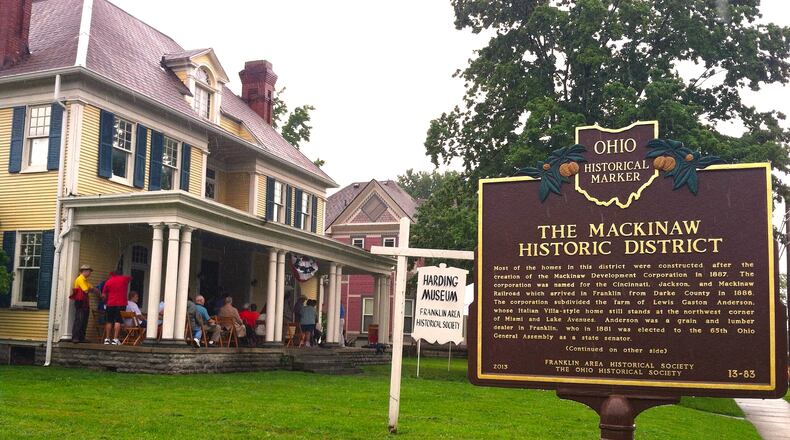Today, we feature the marker for The Mackinaw Historic District, located at the Franklin Area Historical Society, 302 Park Ave. in Franklin.
Marker location
Marker text
— Side A: Most of the homes in this district were constructed after the creation of the Mackinaw Development Corporation in 1887. The corporation was named for the Cincinnati, Jackson, and Mackinaw Railroad which arrived in Franklin from Darke County in 1886.
The corporation subdivided the farm of Lewis Gaston Anderson, whose Italian Villa-style home still stands at the northwest corner of Miami and Lake Avenues. Anderson was a grain and lumber dealer in Franklin, who in 1881 was elected to the 65th Ohio General Assembly as a state senator.
— Side B: This collection of residences was listed on the National Register of Historic Places by the U.S. Department of the Interior in 1980. The district contains 30 houses which directly contribute to its historical quality, in addition to other homes of compatible character.
The dominant architectural style in the district is Queen Anne, although other styles are present. Among these are Italianate and Second Empire, styles which predominate in the larger houses that stood along the river prior to the division of the Anderson farm. Other architectural styles represented include Colonial, Georgian, and Spanish Revival; Eastlake, Cape Cod, and Bungalow.
The district was home to many of Franklin’s mercantile and industrial leaders in the late 19th and early 20th centuries.
The Ohio Historical Markers program
Beginning in the 1950s, the program encompasses over 1,750 unique markers that tell the state’s history as written by its communities.
Reading a marker
In addition to the text describing the historic marker, in the lower right is a number. This indicates the sequence number of the sign installed in a particular county.
Example above
Marker No. 13-83. The 13 indicates that this particular marker is the 13th marker to be erected in the county and 83 indicates that the marker is located in Warren County.
More information about markers
You can find information about all of Ohio’s historical markers at the Remarkable Ohio website.

